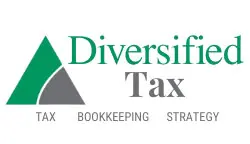What is a Progressive Tax?
Table of Contents
What is a Progressive Tax?
In a nutshell, a progressive tax is a system where individuals with higher incomes are taxed at higher rates than those with lower incomes. The concept behind a progressive tax is rooted in the idea of fairness and equity. Proponents argue that it helps to redistribute income and reduce income inequality within society.
However, critics argue that it can discourage wealth accumulation, hinder economic growth, and create disincentives for hard work and success. To understand the implications of a progressive tax system, it’s important to delve into its history, impact, and examples from around the world. This article explores the fundamentals of a progressive tax and provides an overview of its pros and cons. So, let’s dive in and unravel the intricacies of this widely debated taxation system.
How does a Progressive Tax work?
A progressive tax system operates on the principle of marginal tax rates. This means that as an individual’s income increases, so does the tax rate applied to each additional dollar earned. The idea is that those who earn more have a greater ability to pay taxes, and therefore should contribute a higher proportion of their income to support public services and social welfare programs.
For example, let’s consider a simplified progressive tax system with three income brackets: low-income, middle-income, and high-income. In this hypothetical system, the low-income bracket might have a tax rate of 10%, the middle-income bracket a tax rate of 20%, and the high-income bracket a tax rate of 30%.
Suppose an individual falls into the middle-income bracket and earns $50,000 per year. Under this progressive tax system, they would pay 10% on the first portion of their income up to a certain threshold (let’s say $20,000), and then 20% on the remaining portion of their income. This means that their tax liability would be $2,000 (10% of $20,000) plus $6,000 (20% of $30,000), resulting in a total tax payment of $8,000.
The progressive nature of the tax system ensures that individuals with higher incomes contribute a greater proportion of their earnings to taxes. This progressive structure is typically implemented through the use of tax brackets, with each bracket having its own tax rate that applies to a specific range of income.
While the specifics of progressive tax systems can vary from country to country, the underlying principle remains the same: higher earners pay a higher percentage of their income in taxes, while lower earners pay a lower percentage.
Advantages of a Progressive Tax System
1. Redistribution of Wealth
One of the primary advantages of a progressive tax system is its ability to redistribute wealth within society. By taxing higher-income individuals at higher rates, the government is able to collect more revenue from those who can afford to contribute more. This revenue can then be used to fund public services, social welfare programs, and infrastructure projects that benefit the entire population, especially those in lower-income brackets. Progressive taxation aims to reduce income inequality by ensuring that wealth is more evenly distributed.
2. Ability to Fund Social Programs
Progressive tax systems generate significant revenue that can be used to fund social programs such as healthcare, education, and social security. These programs provide essential services and support to the most vulnerable members of society. By implementing a progressive tax system, governments can ensure that these programs are adequately funded and accessible to all citizens, regardless of their income level.
3. Economic Stability
Progressive tax systems can contribute to economic stability by reducing the wealth gap and promoting a more equitable distribution of resources. When wealth is concentrated in the hands of a few, it can lead to social unrest and economic instability. By taxing higher-income individuals at higher rates, a progressive tax system helps to address this imbalance and create a more stable economic environment.
Disadvantages of a Progressive Tax System
1. Discouragement of Wealth Accumulation
Critics of progressive tax systems argue that they can discourage individuals from accumulating wealth. Higher tax rates on higher incomes can create disincentives for individuals to work harder, invest, and engage in entrepreneurial activities. These critics believe that a progressive tax system penalizes success and stifles economic growth by reducing the rewards for hard work and innovation.
2. Impact on Economic Growth
Another criticism of progressive tax systems is that they can hinder economic growth. Higher tax rates on higher incomes can reduce the amount of disposable income available for individuals to spend, save, or invest. This reduction in disposable income can have a negative effect on consumer spending, investment, and overall economic activity. Critics argue that lower tax rates on higher incomes would incentivize individuals to invest, create jobs, and stimulate economic growth.
3. Complexity and Administrative Burden
Progressive tax systems can be complex and challenging to administer. The use of multiple tax brackets and varying rates adds complexity to the tax code, making it difficult for individuals and businesses to understand and comply with their tax obligations. This complexity can lead to increased administrative costs for both taxpayers and tax authorities.
Examples of Countries with Progressive Tax Systems
Progressive tax systems are implemented in various countries around the world. Here are a few examples:
- United States: The United States has a progressive federal income tax system, with tax rates ranging from 10% to 37% based on income levels. Additionally, states may impose their own progressive income taxes.
- Sweden: Sweden is known for its progressive tax system, with tax rates ranging from 32% to 57% for individuals. The country uses a combination of income taxes, social security contributions, and consumption taxes to fund its generous welfare state.
- Germany: Germany also employs a progressive tax system, with tax rates ranging from 14% to 45% for individuals. The country places a strong emphasis on social welfare and provides universal healthcare, education, and social security programs funded through progressive taxation.
- France: In France, the income tax system is progressive, with tax rates ranging from 0% to 45%. The country utilizes progressive taxation as a means to fund its comprehensive social security system and public services.
These examples illustrate how progressive tax systems are implemented differently across countries, but all share the common goal of taxing higher-income individuals at higher rates.
Progressive Tax vs. Flat Tax: A Comparison
While progressive tax systems tax higher earners at higher rates, a flat tax system applies a single tax rate to all individuals, regardless of their income level. Advocates of a flat tax argue that it simplifies the tax code, reduces compliance costs, and promotes economic growth. However, critics argue that it is regressive, as it places a larger burden on lower-income individuals. Let’s compare the two systems:
Progressive Tax System:
- Tax rates increase with income levels.
- Higher-income individuals pay a greater proportion of their income in taxes.
- Aims to redistribute wealth and reduce income inequality.
- Can be complex and administratively burdensome.
Flat Tax System:
- Applies a single tax rate to all individuals, regardless of income level.
- Simplifies the tax code and reduces administrative costs.
- Critics argue that it can be regressive, as it places a larger burden on lower-income individuals.
- May not effectively address income inequality.
The choice between a progressive tax system and a flat tax system often depends on a country’s socio-economic priorities and political ideology.
The Impact of a Progressive Tax on Income Inequality
One of the main goals of a progressive tax system is to reduce income inequality by redistributing wealth from higher-income individuals to lower-income individuals. Proponents argue that by taxing the rich more heavily, society becomes more equitable, with resources being shared more fairly among all members.
Studies have shown that progressive tax systems can have a significant impact on income inequality. For example, a study by economists Emmanuel Saez and Gabriel Zucman found that the implementation of more progressive tax policies in the United States could reduce income inequality by a significant margin. By increasing tax rates on the top 1% of income earners, the study estimates that the share of total income going to the top 1% could be reduced from 20% to 10% or lower.
Critics argue that while progressive tax systems may reduce income inequality, they can also create disincentives for wealth creation and economic growth. They contend that high tax rates on higher incomes can discourage investment, innovation, and entrepreneurship, ultimately hindering economic prosperity for all.
Criticisms and Controversies Surrounding Progressive Taxation
Progressive taxation has its fair share of criticisms and controversies. Here are a few common arguments against progressive tax systems:
1. Taxing Success and Hard Work
Critics argue that progressive tax systems penalize success and hard work. By imposing higher tax rates on higher incomes, individuals may be discouraged from working harder, investing, or pursuing higher-paying careers. This, in turn, can stifle economic growth and hinder innovation.
2. Wealth Redistribution
Opponents of progressive taxation contend that it amounts to wealth redistribution, which they argue is unfair and can disincentivize wealth creation. They argue that individuals should be able to keep a larger portion of their earnings as a reward for their hard work, talent, and entrepreneurial efforts.
3. Tax Avoidance and Evasion
Critics claim that progressive tax systems can lead to increased tax avoidance and evasion. Higher tax rates on higher incomes may incentivize individuals to engage in aggressive tax planning strategies or move their wealth to low-tax jurisdictions to minimize their tax liabilities. This can result in reduced tax revenue for governments and undermine the intended redistributive effects of progressive taxation.
Progressive Tax Reform Proposals
Over time, various proposals for progressive tax reform have emerged, aiming to address the perceived shortcomings of existing systems. These proposals often seek to strike a balance between fairness, economic growth, and ease of administration. Here are a few examples:
1. Adjusting Tax Brackets and Rates
One approach to progressive tax reform involves adjusting the tax brackets and rates to better reflect income distribution and economic realities. This could mean introducing additional tax brackets for ultra-high-income individuals or modifying existing rates to reduce disincentives for wealth creation.
2. Closing Tax Loopholes
Another proposal involves closing tax loopholes and implementing stricter enforcement measures to reduce tax avoidance and evasion. By ensuring that high-income individuals pay their fair share of taxes, governments can increase revenue and promote a more equitable distribution of wealth.
3. Wealth Taxes
Some progressive tax reform proposals advocate for the introduction of wealth taxes, which would tax individuals based on their net worth rather than just their income. Proponents argue that this would help address wealth inequality and capture income and assets that might otherwise go untaxed.
Conclusion
A progressive tax system is designed to ensure that individuals with higher incomes contribute a greater proportion of their earnings to taxes. While proponents argue that it promotes fairness, reduces income inequality, and funds social programs, critics contend that it can discourage wealth accumulation, hinder economic growth, and create disincentives for success. The choice between a progressive tax system and alternative approaches, such as a flat tax, is a complex one that requires careful consideration of a country’s socio-economic priorities. Ultimately, striking the right balance between fairness, economic growth, and administrative feasibility is key to designing an effective and equitable tax system.




